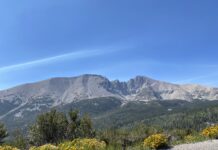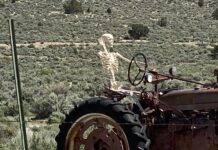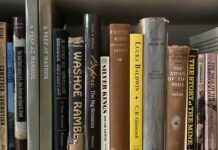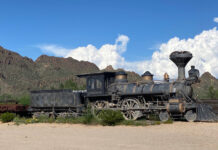Ten of the Best Places for Autumn Colors in Nevada
1. Virginia City
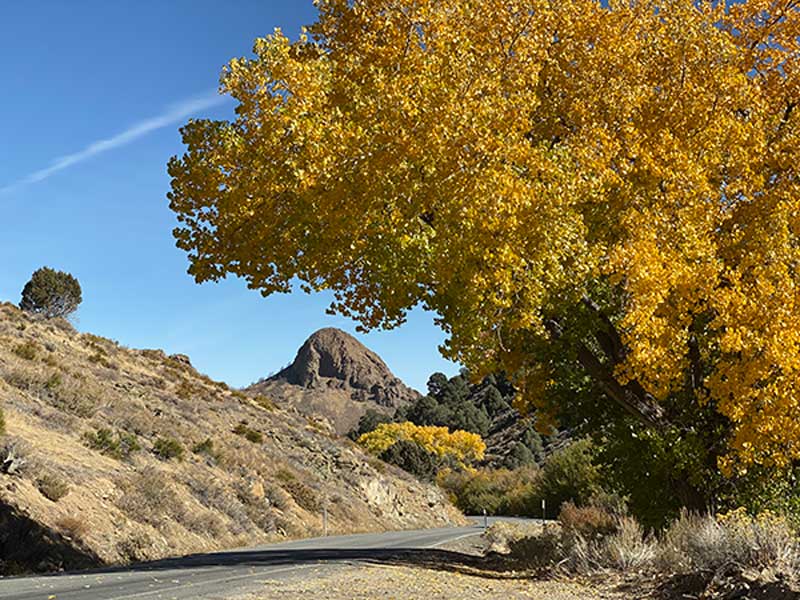
Six Mile Canyon extends from Virginia City’s north end down past Sugarloaf Mountain to US 50 and presents a glowing portrait of autumn as the long line of streamfed cottonwoods curls down its length to the Carson River. Lots of opportunities to pull off the pavement and put your camera to work. Photograph by Robin Cobbey.
2. Dayton
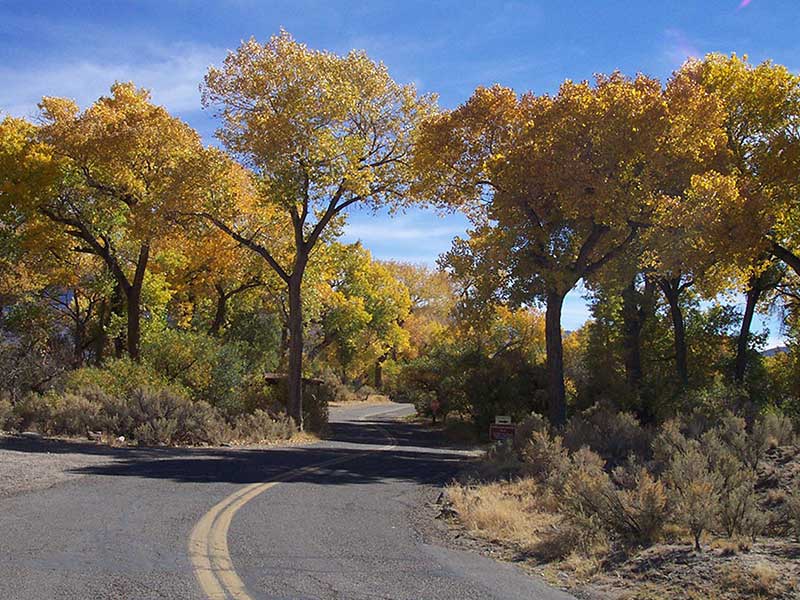
Dayton State Park is on the east side of town along the Carson River, a serene setting that combines what’s left of the 1861 Rock Point Mil with the cottonwoods, sagebrush and willows along the river. The park has picnic tables, campsites and two short hikes — strolls, really — one to the mill ruins, the other to the river bank. It’s an oasis of calm in our busy world. Photograph by Max Winthrop.
3. South Lake Tahoe
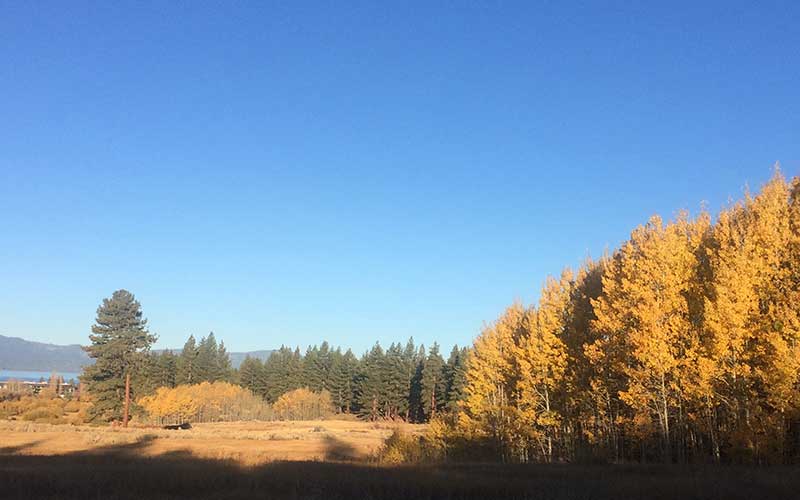
Rabe Meadow, beside Highway 50 in between Zephyr Cove and Stateline is a fabulous place to experience brilliant autumn colors. Just driving by is splendid, but why not take it all in with a walk through the meadow and down to Nevada Beach? The trailhead at Kahle Drive and US 50 will lead you right into the woods for some serious foliage action. Photograph by Brendan Packer
4. Genoa
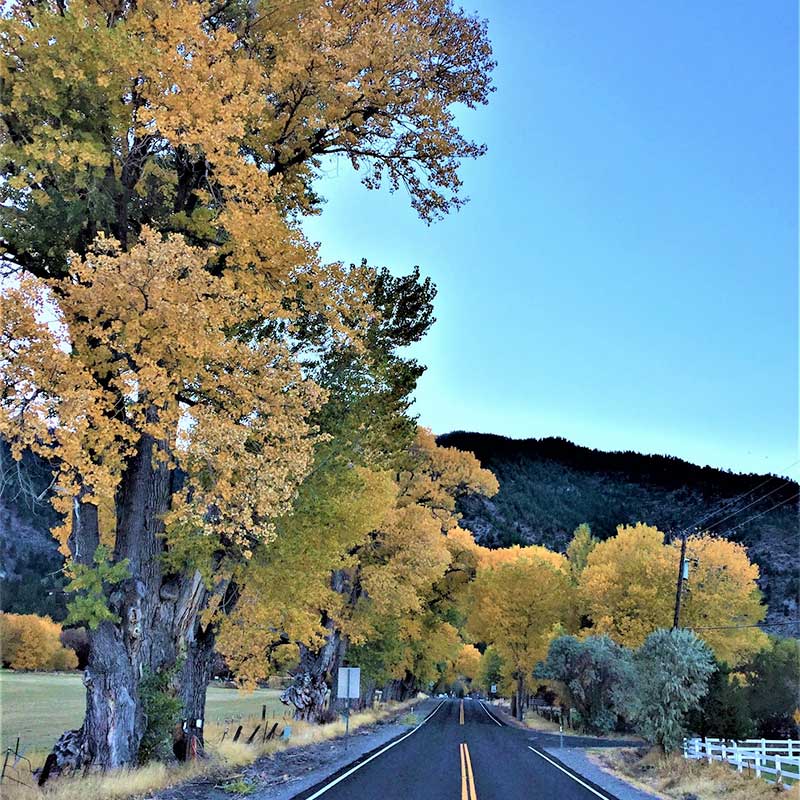
Catch the patchwork quilt of colors fall affords in Carson Valley. From the yellow aspen canyons of the Sierra Nevada, to the orange cottonwoods along Topaz Lake and Carson River, to the bright red maples in Genoa, fall colors sparkle all around us. Drive to it, not through it! Photograph by Brendan Riley.
5. Great Basin National Park
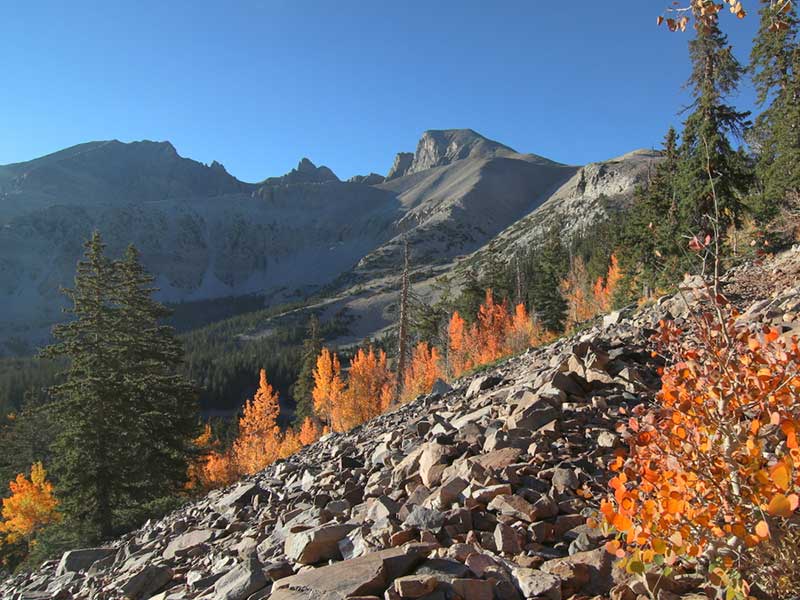
Fall colors are brilliant as the whole mountain, from Baker at 5,300 feet to Wheeler Peak at 13,063 feet, is erupting bright colors along the Wheeler Peak Scenic Drive beyond Upper Lehman Campground. The Wheeler Peak Summit Trail, the mining cabin area on the way to Johnson Lake in the Snake Creek watershed, and later all along the Snake Creek road, and the Baker Creek area are all ablaze. Photograph by Gretchen Baker.
6. Lamoille Canyon
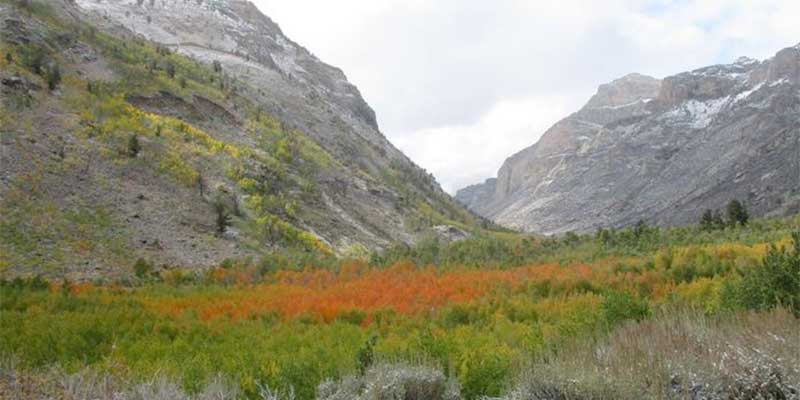
There are still plenty of fall colors to see in Lamoille Canyon in the upper reaches of the canyon that did not burn in last year’s wildfire. My favorite spot this year will be Thomas Canyon. Photograph by Doug Clarke
7. Winnemucca
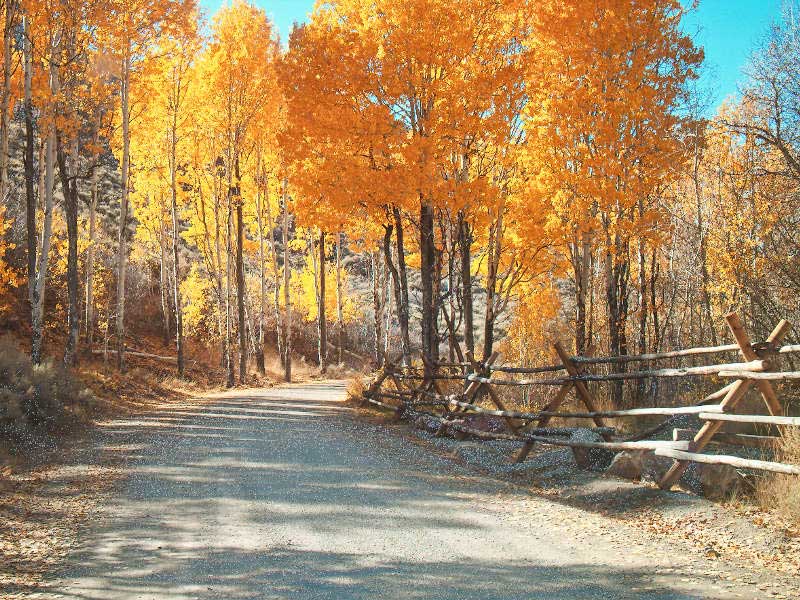
Water Canyon is a top fall color destination and it’s easily accessible from town. Take Hanson Street southeast from the westernmost of the town’s three traffic lights on Winnemucca Blvd and 10 minutes later you’re cruising through fall color next to lovely, babbling, drinkable (in winter) White’s Creek.
Where the road ends, terrific hiking possibilities extend, suitable for ages three and up. Keeping left at the fork takes you 1.75 miles to a 15-foot yurt erected every winter where you can make a fire, record your thoughts in the guest book, read a short story from the small reading library, and rest a bit before heading back down the hill. Photograph by Henry Kingman
8. Mount Charleston
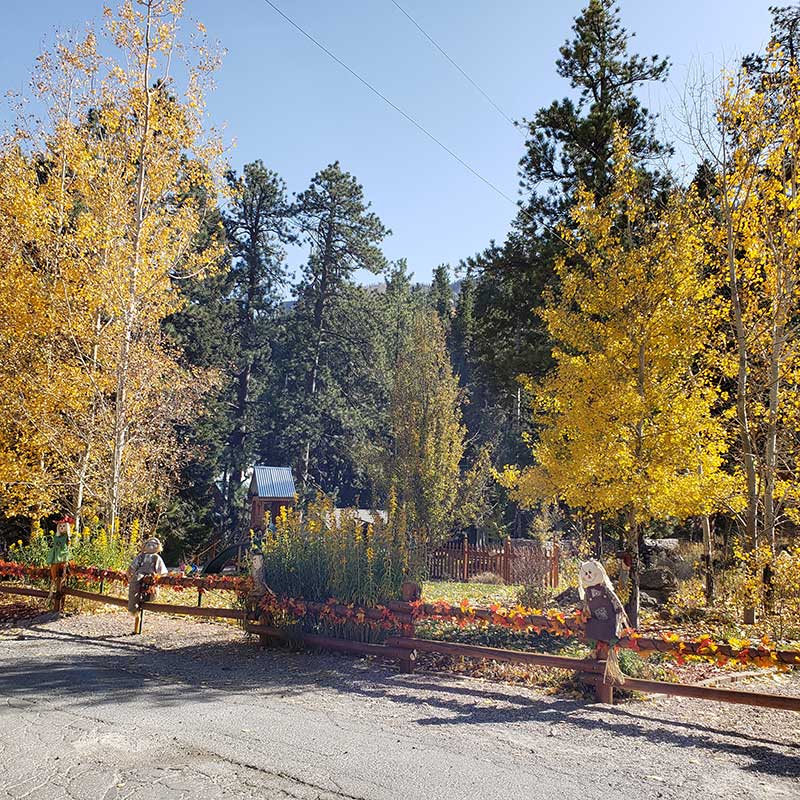
Mt. Charleston, aka Spring Mountain National Recreation Area, is a captivating 45-minute — or all day — escape from Las Vegas. At an elevation over 7,000 feet, the vegetation enjoys four seasons on the pine covered slopes. Exit State Route 95 at Kyle Canyon Road and enjoy the winding climb through the climate zones. The Resort at Mt. Charleston and Mt. Charleston Lodge make pleasant stops. Photograph by Jackie Brett
9.Topaz Lake
Whether close to the water or looking down from above, the color spectacle at Topaz Lake takes your breath away. The year-round splendor in the southern portion of Carson Valley culminates in the fall, begging to be the backdrop of your next adventure. Photograph by First Tracks Productions
10. Along the East Walker River
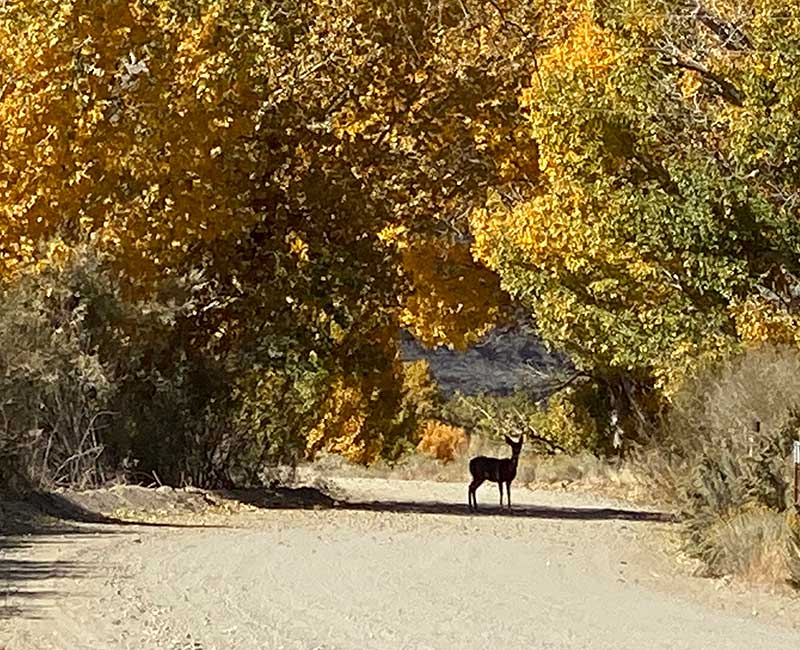
Just reuniting with the East Walker, north of Fletcher and downstream from The Elbow. The rose hips were plentiful on the thorny stems here, and this pedestrian paused to wonder at us as we picked them. So we paused and wondered at her too. Photograph by Robin Cobbey
And one more: Carson City
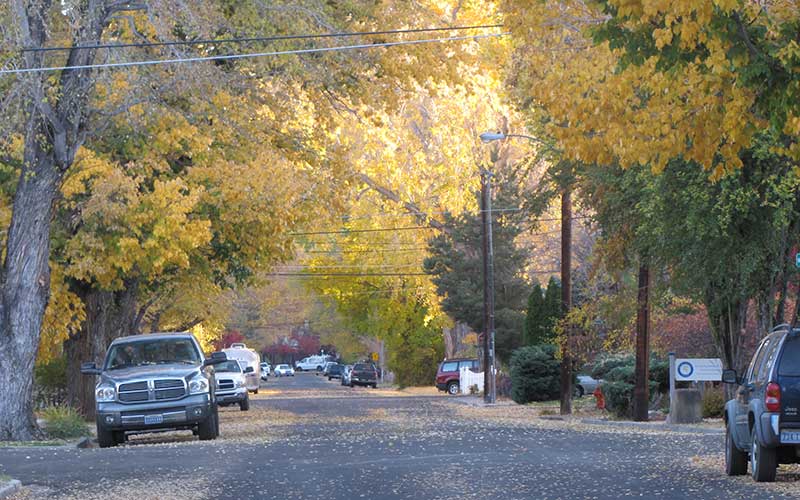
Carson City’s historic West Side is shaded by a canopy of Cottonwoods that brighten up the neighborhood in the fall. Photograph by Max Winthrop
Editor’s Choice —
 A farewell to Adele’s
A farewell to Adele’s
by Jon Ralston
I don’t remember the first time I was at Adele’s, but I remember the last.
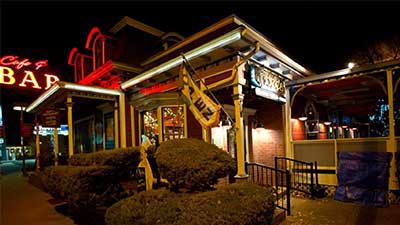 It was March 27 for a dinner with my beloved Indy team in the back room where so many major Carson City deals had been consummated, so much secret Nevada history made. I had no idea it would be my final meal at one of my favorite restaurants in the world, one I had grown to love, one that has so many cherished memories.
It was March 27 for a dinner with my beloved Indy team in the back room where so many major Carson City deals had been consummated, so much secret Nevada history made. I had no idea it would be my final meal at one of my favorite restaurants in the world, one I had grown to love, one that has so many cherished memories.
But it was.
A few hours after we left the iconic capital eatery, a fire broke out in a laundry room, causing smoke damage to the restaurant proper and shuttering Cafe at Adele’s, as it is formally known. After several attempts to sell it and after months of haggling with their insurance company, Charlie and Karen Abowd have decided not to reopen a place that gave so much pleasure to so many.
“We have to think of ourselves,” Charlie told me Saturday morning. “The restaurant was for sale. We were looking to retire anyhow.”
 And he added: “There are so many memories, so many big events. We have seen children grow up, become adults and then seen their children. All of that is heartbreaking, but at some point in your life, you have to think about Charlie and Karen.”
And he added: “There are so many memories, so many big events. We have seen children grow up, become adults and then seen their children. All of that is heartbreaking, but at some point in your life, you have to think about Charlie and Karen.”
He was ‘goofy and innocent and often annoying,’ but he inspired a tough town to celebrate eccentricities
by John M. Glionna
Most days, they were on the radio waves as the town woke up: Flash and Mr. Cool, Gerlach’s morning duo 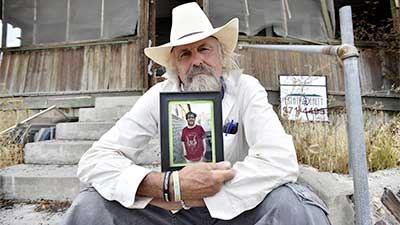 for traffic, weather and, well, whatever else they wanted to talk about.
for traffic, weather and, well, whatever else they wanted to talk about.
Michael Hopkins and Tommy Cash Cosman broadcast from the defunct Gerlach Hotel, a ramshackle hulk with dim lighting, leaky pipes and no heat or AC.
They were the familiar voices of KLAP Radio, “89.5 on your FM dial, the Fine 89,” exhorting listeners to tune in to a signal that beamed 50 miles out of town.
Their whimsical on-air routine was a perfect fit for this high-desert hamlet north of Reno, population 206, home to an oddball cast of recalcitrant ranchers, miners, retirees and other big-city refugees, a place one resident described as “living among 100 angry cousins.”
“OK, now it’s time for the traffic report,” Hopkins started. “Mr. Cool?”
“Well, I can see there’s a dog crossing the road,” Cosman responded. “That’s all the traffic for today.”
The Enduring Spirit of Nevada Statehood
by Hugh Jackson (originally published October 31 2017 – 3:00 am)
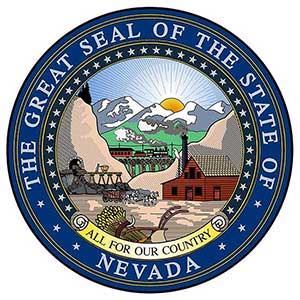 Constitutions tend to be regarded as sacred civic scripture, devised only after solemn proceedings in which human rights and principles of governance are earnestly pondered by inspired souls committed to justice and the betterment of humanity.
Constitutions tend to be regarded as sacred civic scripture, devised only after solemn proceedings in which human rights and principles of governance are earnestly pondered by inspired souls committed to justice and the betterment of humanity.
That’s not what this is about.
This is about the making of Nevada’s Constitution.
When Abraham Lincoln signed the proclamation making Nevada a state 153 years ago today (not 153 years ago last Friday), it was, to be sure, partly in aid of the most profound reform in U.S. history – abolishing slavery.
In the Nevada territory, however, it was taken as a given that a new state of Nevada, and that new state’s members of Congress, would support the 13th Amendment to the U.S. Constitution.
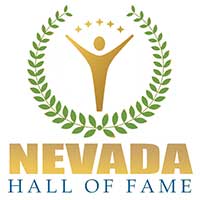 That’s not what the constitutional debate was about. What the Nevada constitutional debate was about, of course, was mining. Some territorial voters wanted mining to be taxed like all other property. Miners wanted to be taxed only on net proceeds. Mining won. To this day, no one holds Nevada’s Constitution more sacrosanct than the mining industry.
That’s not what the constitutional debate was about. What the Nevada constitutional debate was about, of course, was mining. Some territorial voters wanted mining to be taxed like all other property. Miners wanted to be taxed only on net proceeds. Mining won. To this day, no one holds Nevada’s Constitution more sacrosanct than the mining industry.
5 Years Ago in the NevadaGram
The 2014 Governor’s Conference on Tourism was held earlier in the week at the Atlantis Hotel Casino in Reno, a shining hive of hospitality just north of the Convention Center on Virginia Street.
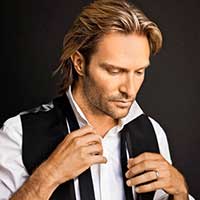
The event was the anticipated combination of pep rally and vocational schoolhouse, and it provided attendees with an update on the activities of the Nevada Commission on Tourism and a chance to network and schmooze, and to enjoy the elegant cuisine at the Atlantis.
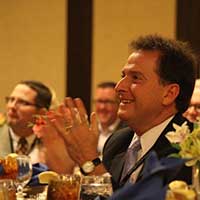
Highlights of the event were the high-energy presentation by Nevada-born musician Eric Whitacre, who got the crowd to singing, and the reluctant and affectionate farewell to Brian Krolicki, termed out as Lieutenant Governor and as standard-bearer of the state’s Economic Development and Tourism Commissions.
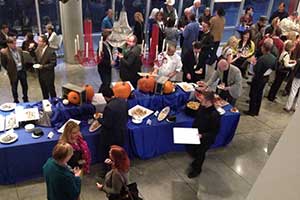 But the brightest highlight of all was the opening reception at the Nevada Museum of Art. The food was good, the art was great and the 36th Star exhibit upstairs was priceless.
But the brightest highlight of all was the opening reception at the Nevada Museum of Art. The food was good, the art was great and the 36th Star exhibit upstairs was priceless. 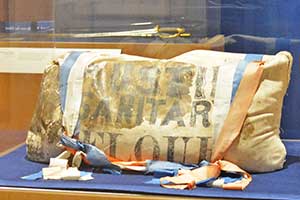 Three of the museum’s galleries were devoted to a unique display of artifacts from the national collections as well as from our own Nevada archives. One underlying theme was the effort to answer the question “What does it really mean for a state to be Battle Born?” Answers to the question ranged from the Emancipation Proclamation that President Lincoln signed, to the muster rolls of the Nevada Volunteers, and it included that Icon of all Nevada Icons, the Sanitary Fund’s precious sack of Flour. That alone made the exhibit unforgettable.
Three of the museum’s galleries were devoted to a unique display of artifacts from the national collections as well as from our own Nevada archives. One underlying theme was the effort to answer the question “What does it really mean for a state to be Battle Born?” Answers to the question ranged from the Emancipation Proclamation that President Lincoln signed, to the muster rolls of the Nevada Volunteers, and it included that Icon of all Nevada Icons, the Sanitary Fund’s precious sack of Flour. That alone made the exhibit unforgettable.
Overheard at the Artisan Cafe in Carson City — “It was so quiet we could hear the wine breath.”
10 Years Ago in the NevadaGram
Now for some time travel. Buckle up, please.
While cleaning out an old building in Virginia City a few years ago, Winson Hong made a fascinating discovery. He found an advertising calendar from 1909, the inexpensive kind with the sponsor’s advertising and an illustration printed on a piece of card stock, and a small pad of 12 sheets, each one containing the dates for a month, stapled to that. The first two monthly leaves, for January and February, had been torn off, leaving March 1909 showing.
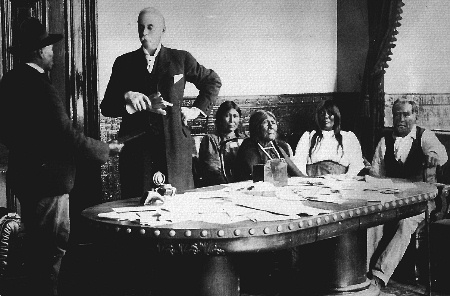
The sponsor of the advertising calendar was Self & Sellman Mill & Building Co. of Reno. In 1909 the firm’s lumber and building supply yard was at 335 E. Fourth Street. “Sash, Doors, Mill Work, Paints, Oils, Glass. Estimates Furnished Free.”
What makes it fascinating is the illustration. Here’s the caption beneath the photograph: “Indian Johnny’s father, mother, two sisters and an interpreter appealing to Governor Sparks to save the life of their son and brother, who was executed for the crime of murder at the Nevada State Prison December 7, 1906.”
The Governor is standing with his back to the family. Johnny’s mother looks like grief carved from granite, but all of them know what’s coming. They sit somber and silent. The governor has his gloves in his hand while the interpreter pleads for Johnny’s life. And isn’t he sneaking a look at his watch? Perhaps he has something important on his schedule.
At the Nevada Historical Society, we strap into a microfilm reader, and launch back to January 5, 1906.
What they’re saying About Us —
15 Years Ago in the NevadaGram
Getting ready for winter, going nowhere until the firewood is stacked.
Parting Shot —
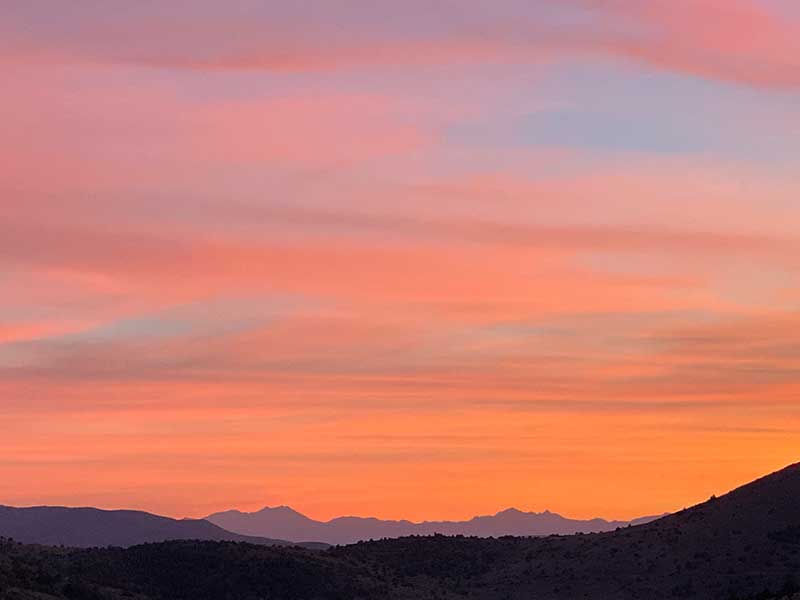 Sunset over the Sierra – Photograph by Robin Cobbey
Sunset over the Sierra – Photograph by Robin Cobbey




